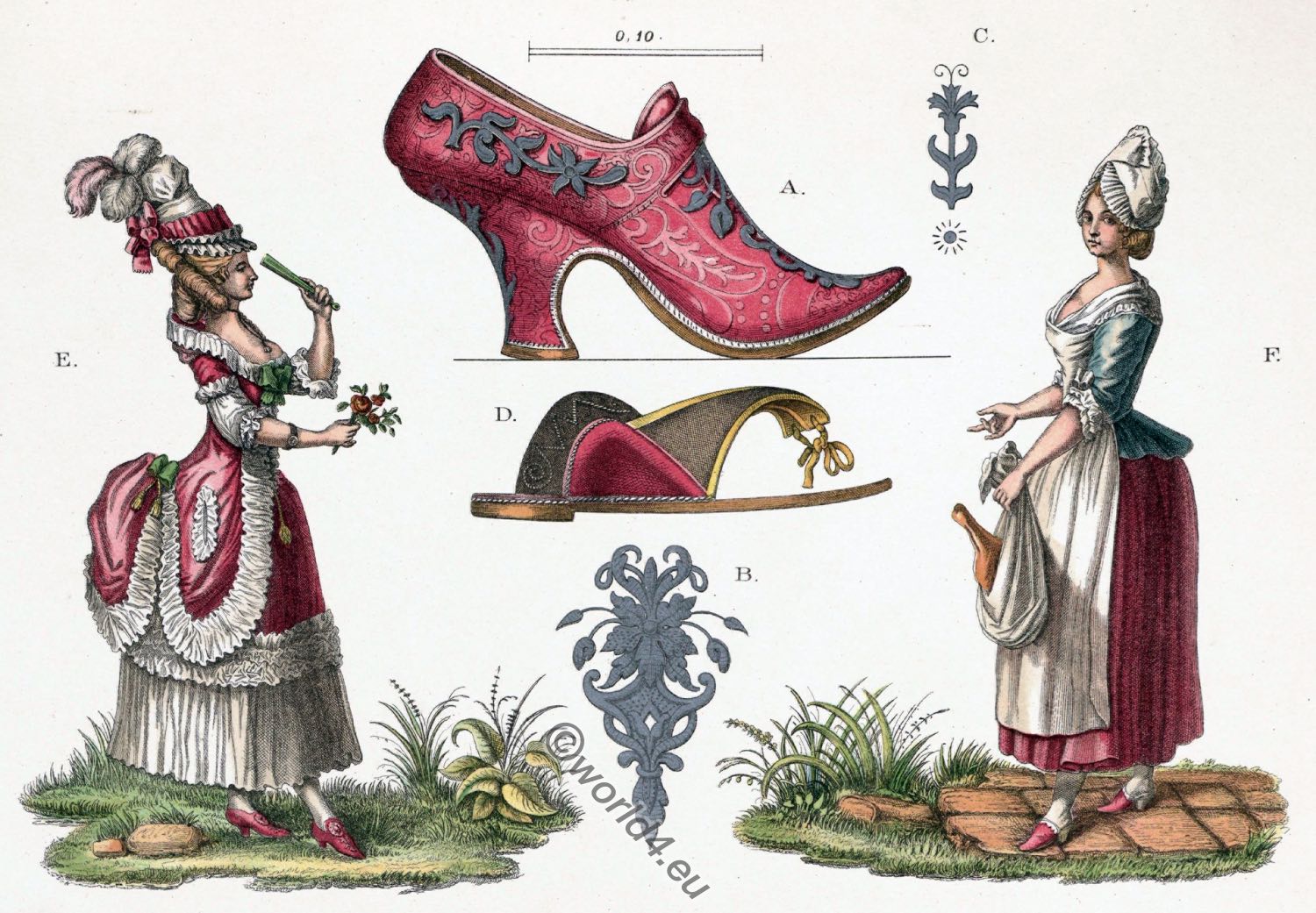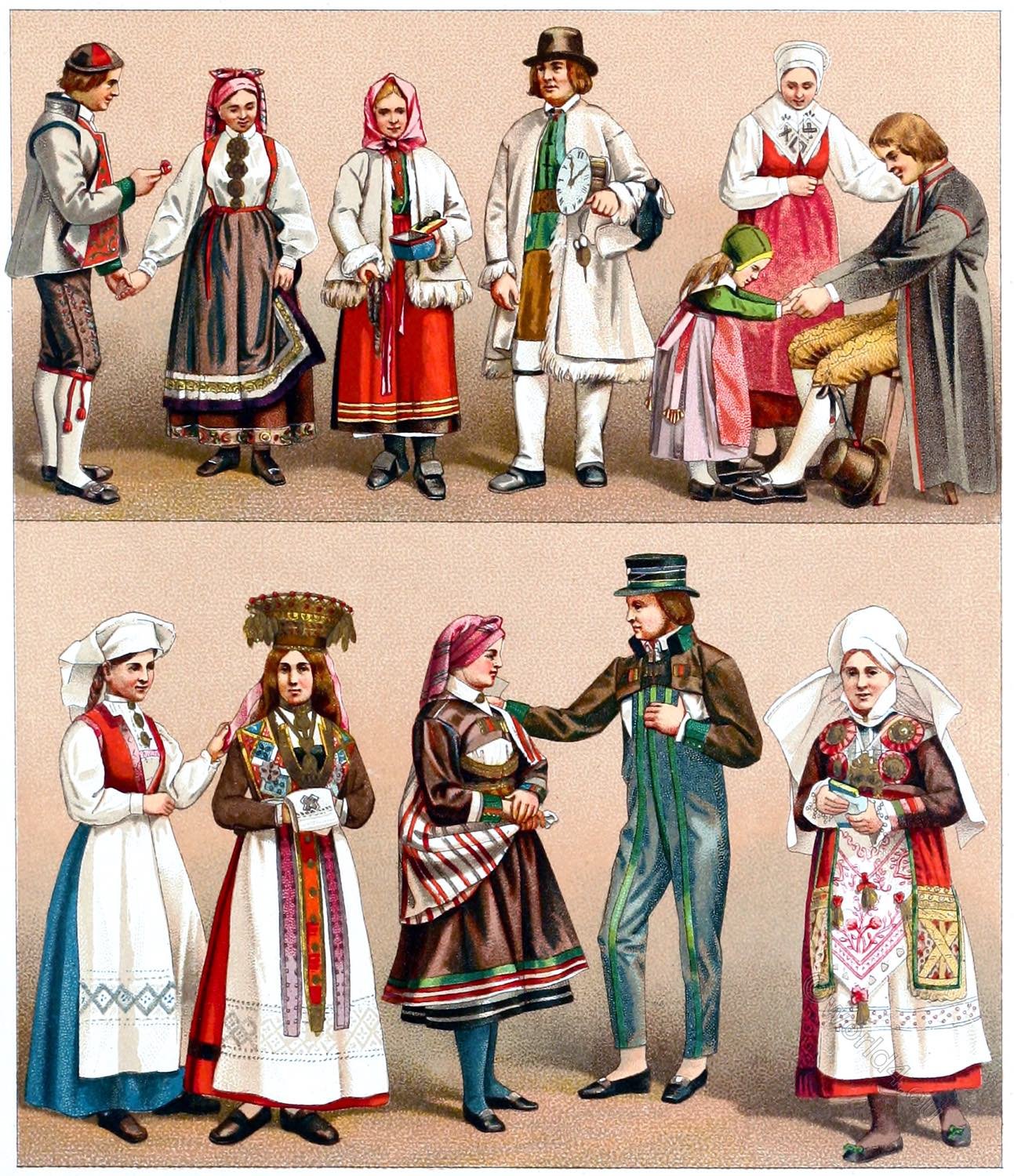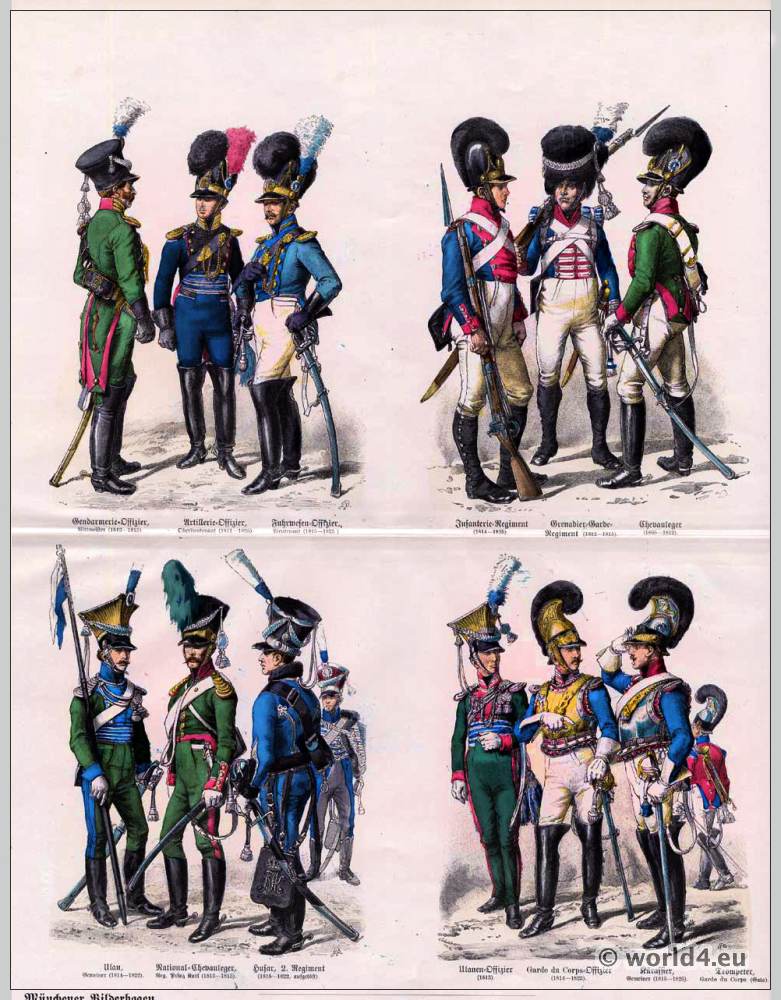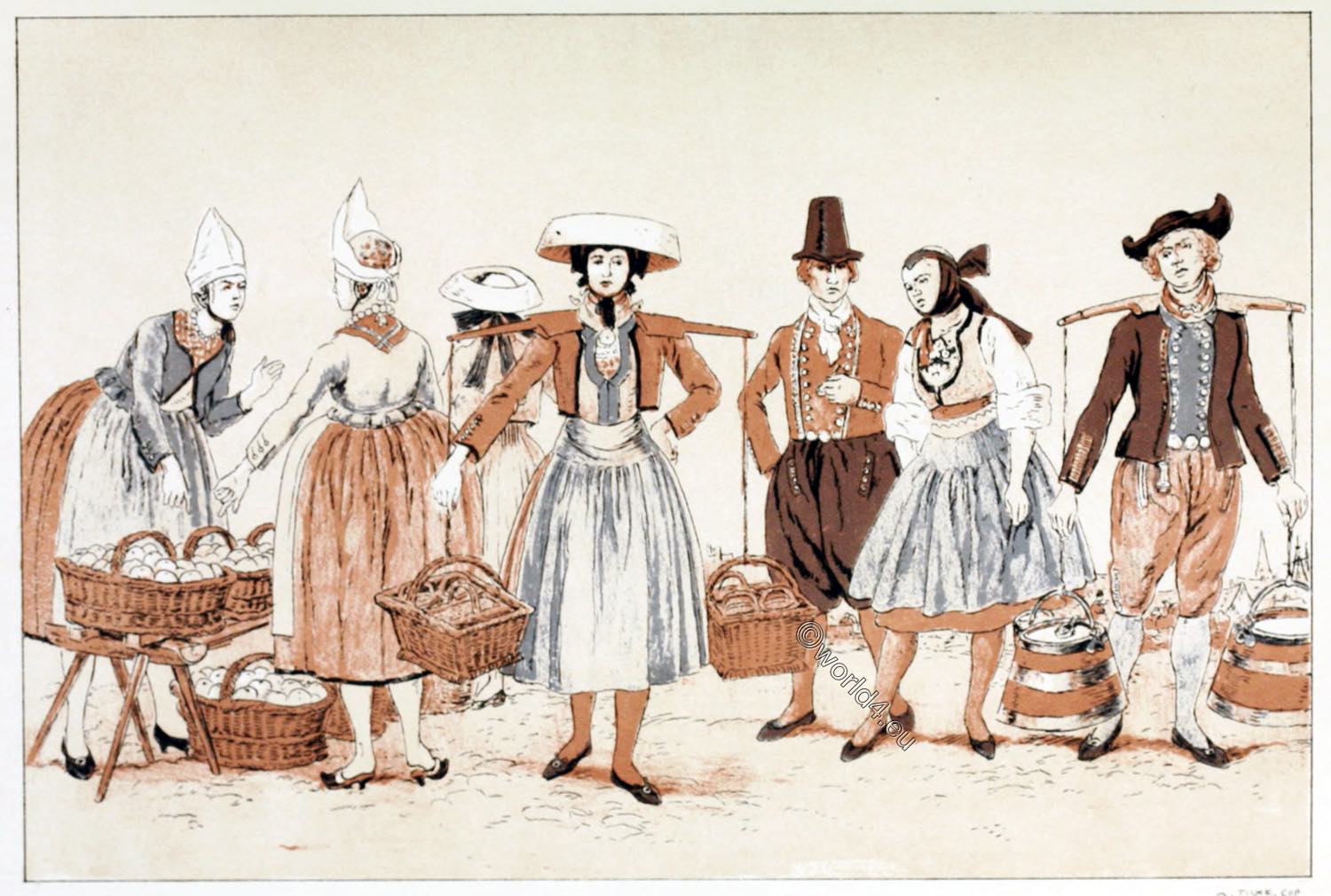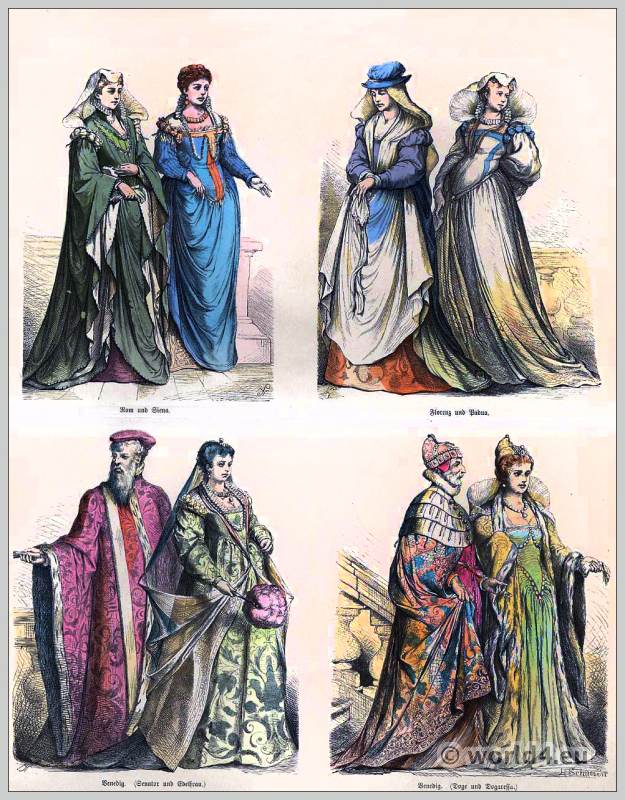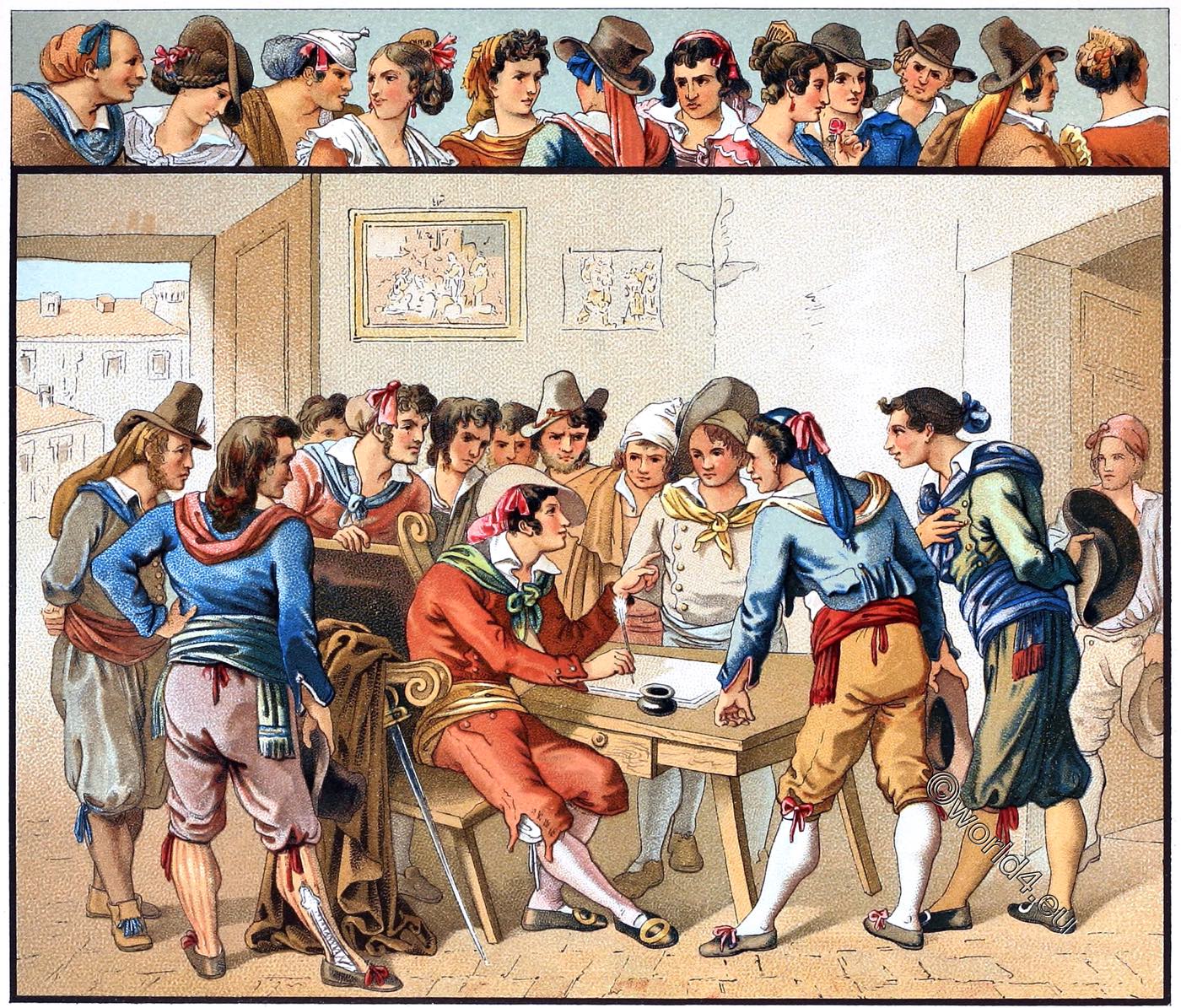
ITALY. ROMAN FOLK COSTUMES OF THE 19TH CENTURY.
Costumes of the inhabitants of Trastevere.
Trastevere (from Latin Tiberim “beyond the Tiber”) is the XIII Rione (district) of Rome.
The lower part of our panel is taken from the 52 etchings published by the Roman painter Bartolommeo Pinelli (1781-1835) for the humorous-satirical poem Meo Patacca by Giuseppe Bernari in 1823.
Although this poem, written in Roman folk dialect, was already published in 1695, the modern illustrator has given the characters the costumes of his time, so that the illustrations are characteristic of the costume history of the first quarter of the XIX century.
Meo Patacca is a folk hero of comic colour, a revolutionary Bramarbas, whose name (Patacca means small change, penny) is supposed to denote his popularity but also his muzzling heroism. The content of the poem is the excitement caused in Rome by the news that Vienna has been besieged and already conquered by the Turks. On the base of this news, Patacca calls the inhabitants of Trastevere together – this scene represents our illustration, to cheer them on with his eloquence to form a liberation corps. He trains the people and makes himself their commander until the news of Vienna’s liberation arrives. He receives it first and spreads it with the same fire of eloquence that he has proven in the past. The poem closes with the marriage of Patacca and Nuccia, a beautiful Trasteverin.
In his Tableaux de la ville éternelle (1835) Joseph Regnier says: “Only the people of the people hold on to the velvet jacket (carmagnole), the striped belt (fascia), the trousers similar to the jacket, the wide knee bows and the oversized shoe buckles.
Some wear their thick hair in a silk net knotted together at one ear and put on the other ear a pointed hat with one side rolled up. A kind of red scarf is wrapped around their bare shoulders; the little jacket flies around in the air like a hussar dolman *), and the white or red Neapolitan waistcoat is closed with small chains ending in silver buckles. The knee strap is unhooked to reveal red pants, which are fastened tightly around the knee with a fluttering rosette”.
*) Dolman (Turkish), a short-shouldered jacket with strings, former clothing of the hussars.
The upper row of headdresses is taken from the same work.
Illustrations:
1, 2, 3, 4, 5, 6, 7, 8, 9, 10, 11,
- No. 1. One of the witnesses at Patacca’s wedding. The cap is fastened with a ribbon tightened into a bow over the forehead.
- No. 2. young man with braided hair, decorated with a bow and a pin.
- No. 3. Marco Pepe, Patacea’s rival, wearing the same cap as No. 1. The cotton pointed cap pulled over his forehead seems to be used only to hide a head wound that Patacea taught him.
- No. 4 Nuccia, Patacca’s bride. The hair is partly braided, with a high comb, bows and long earrings.
- No. 5. Meo Patacca.
- No. 6. man with hat and long hairnet.
- No. 7. young man with headscarf.
- No 8 Woman with high chignon and comb.
- No. 9, 10 and 11. Different patterns of hats.
- No. 12. rear view of a chignon with surface.
See Eugene de Montlaur, De l’Italie et de l’Espagne (Paris 1852). – Ch. de Brosses, Lettres familières écrites d’Italie en 1739 et 1740. With a literary study and notes by H. Bobou (paris 1858).
Source: History of the costume in chronological development by Albert Charles Auguste Racinet. Adapted by Adolf Rosenberg. Berlin 1888.

